Are you experiencing the frustrating problem of hot water from your cold tap? This can be a common issue in households, but fortunately, some simple solutions exist.
Hot water coming out of the cold tap can be an inconvenient and puzzling issue in any household. This unexpected problem often points to a malfunction somewhere in the plumbing system. Left unaddressed, it can lead to wasted energy, higher utility bills, and potential damage to fixtures. Fortunately, identifying and resolving the root cause is usually straightforward with some basic troubleshooting.
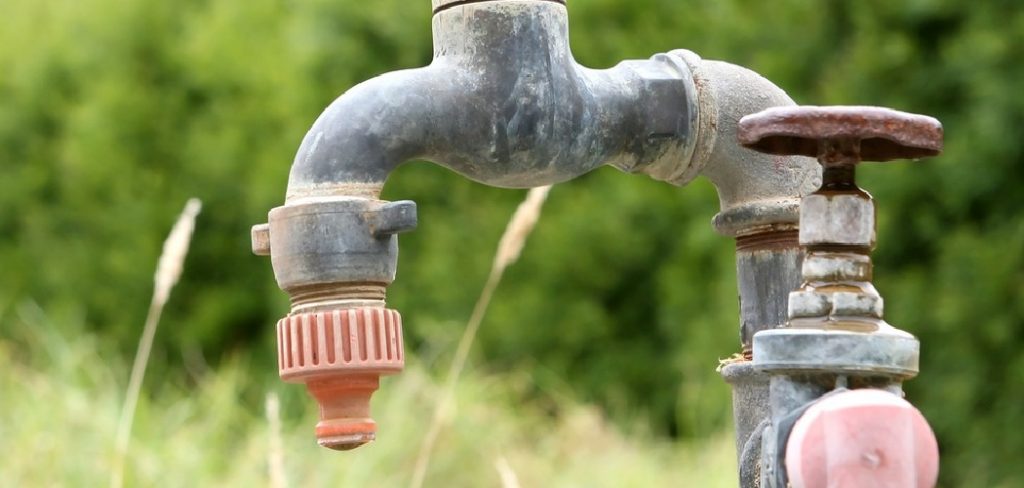
This guide on how to fix hot water coming out of cold tap will walk you through the possible reasons for this issue and provide you with practical steps to restore the proper functionality of your cold water tap.
What Are the Causes of Hot Water Coming Out of Cold Tap?
Before we dive into the steps to fix this issue, it’s essential to understand the possible causes. Here are a few common reasons why you may be experiencing hot water coming out of your cold tap:
- Cross-Connected Pipes: This is one of the most common causes of hot water in cold taps. It happens when hot and cold water pipes are mistakenly connected during installation or repair work.
- Failed Thermostatic Mixing Valve: A thermostatic mixing valve (TMV) controls the temperature of water flowing through a tap by blending hot and cold water in precise proportions. If this valve fails, it can result in mixed temperatures from taps.
- Water Heater Issue: If your hot water heater is malfunctioning, it can cause hot water backflow into the cold-water supply line, resulting in hot water coming out of the cold tap.
- Clogged Pipes: Over time, debris and mineral buildup can block pipes and affect water flow. In this case, hot water may get trapped in your cold-water pipes and mix with the cold water when you turn on the tap.
What Will You Need?
Before you start troubleshooting, it’s helpful to gather a few tools and materials that may be required:
- Pliers
- Screwdriver
- Wrench
- Bucket or bowl to catch water
- Pipe brush (if suspecting blocked pipes)
Once these items are ready, follow the steps below to fix the hot water from the cold tap.
8 Easy Steps on How to Fix Hot Water Coming Out of Cold Tap
Step 1. Turn Off the Water Supply
Locate your home’s main water supply valve and turn it off completely. This step is crucial to prevent water from flowing through the pipes while you work on identifying and resolving the issue. Turning off the water supply ensures safety and eliminates the risk of accidental water damage or flooding during the repair process. If you’re unsure where the main valve is located, it is often found near the water meter or where the main water line enters your home. After turning it off, open a faucet to release residual water in the pipes.
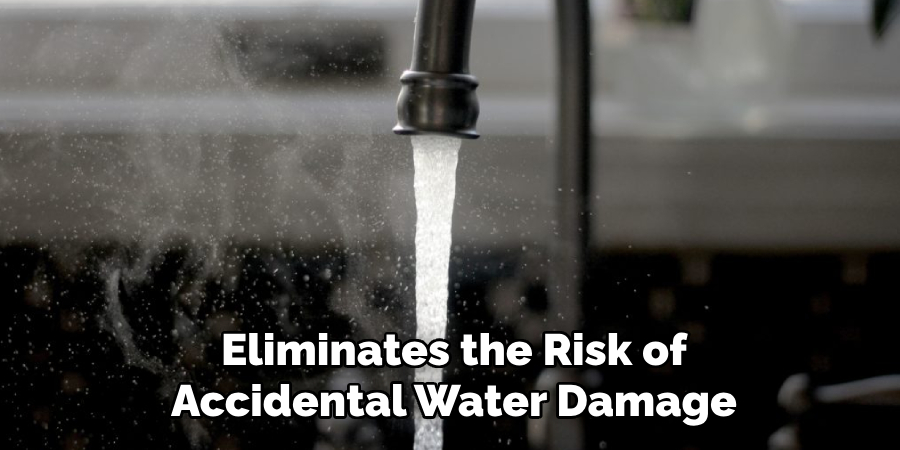
Step 2. Inspect the Pipe Connections
Carefully examine the pipe connections under sinks, behind walls, or near the water heater to identify any cross-connections or reverse piping issues. Cross-connections can occur when hot and cold water lines are incorrectly joined, leading to hot water coming out of the cold tap. Look for signs of recent plumbing work, leaks, or unusual configurations. If you notice any suspicious connections, note them for further assessment or repair. This step is essential to pinpoint potential causes before proceeding with adjustments or fixes.
Step 3. Check for Blockages or Airlocks
Once you’ve inspected the pipe connections, check for any blockages or airlocks in the plumbing system that could be causing irregular water flow or pressure issues. Blockages are often caused by a buildup of debris, minerals, or rust within the pipes, while airlocks can occur when air becomes trapped in the plumbing lines. Run all the taps in the affected area to check for inconsistencies, such as sputtering, uneven water flow, or complete stoppages. If you suspect a blockage or airlock, you may need to clear the obstruction or flush the system to restore proper water circulation.
Step 4. Test the Water Pressure
After addressing any blockages or airlocks, test the water pressure to ensure the system functions correctly. A water pressure gauge is used to measure the pressure at the main supply or at individual fixtures. Standard residential water pressure typically ranges between 40-60 psi. If the pressure is too low or too high, it could indicate issues such as a faulty pressure regulator or problems with the main water supply line. Adjust the pressure settings if necessary, or consult a professional if the problem persists.
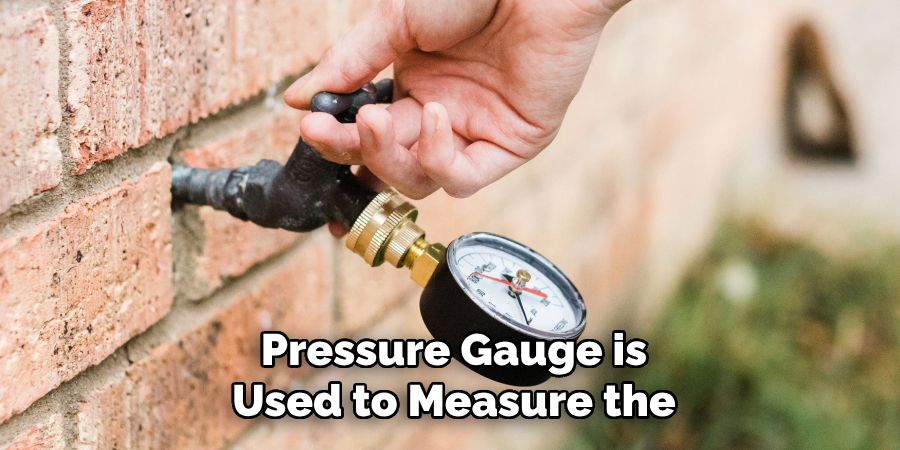
Step 5. Inspect for Leaks
Inspect the plumbing system for leaks once the water pressure has been tested and adjusted. Leaks can occur in joints, fixtures, or pipes and may lead to water loss, increased utility bills, or damage to your property. Check visible components for dripping or pooling water, and listen for unusual sounds like hissing that could indicate a hidden leak. Consider using a moisture meter or consulting a plumbing professional for hard-to-access areas. Address leaks promptly with appropriate repairs or replacements to maintain an efficient and reliable system.
Step 6. Flush the System
Flushing the plumbing system is essential to remove built-up debris, sediment, or potential contaminants affecting water quality and flow. Begin by turning on all faucets, starting with those closest to the main water supply and gradually working to the farthest fixtures. Allow the water to run for several minutes to ensure thorough flushing. Pay attention to the clarity of the water—if it remains cloudy or discolored, further investigation may be needed. Once the water runs clear, turn off the faucets in the same order to avoid unnecessary pressure surges. Regularly flushing the system helps maintain optimal performance and water quality.
Step 7. Keep the Water Heater in Check
If you have a hot water heater, it’s crucial to ensure it functions correctly. A faulty water heater can cause backflows of hot water into cold-water lines and disrupt the temperature balance throughout your plumbing system. Inspect and maintain your water heater regularly by checking for leaks or signs of malfunction, flushing the tank annually, and calling a professional for repairs if needed.
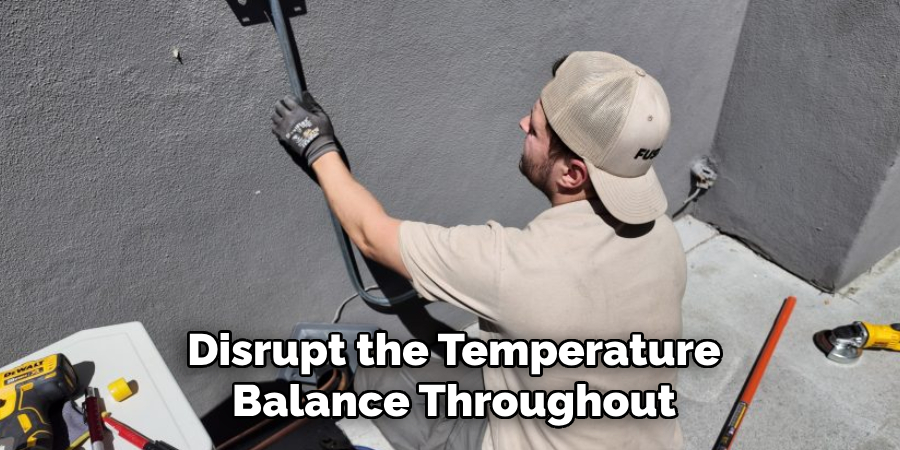
Step 8. Adjust the Thermostatic Mixing Valve (TMV)
The thermostatic mixing valve (TMV) is critical in regulating water temperature and preventing scalding, making it an essential component of your plumbing system. Regularly check and adjust the TMV settings as needed to maintain optimum performance. Start by identifying the ideal temperature for your household—typically, a safe and comfortable range is between 100°F and 120°F. A thermometer is used to measure the water temperature at the outlet and fine-tune the valve accordingly. If the water feels too hot or too cold, a slight adjustment to the mixing valve should restore the desired balance.
Additionally, inspect the TMV for any signs of buildup, corrosion, or mechanical wear that could affect its functionality. Consider consulting a licensed plumber to repair or replace the valve if you encounter persistent issues. Regular maintenance of the TMV ensures consistent water temperature, enhances safety and improves energy efficiency within your plumbing system.
By avoiding termination phrases and instead providing further details and steps for maintaining a healthy plumbing system, you can effectively communicate important information to readers.
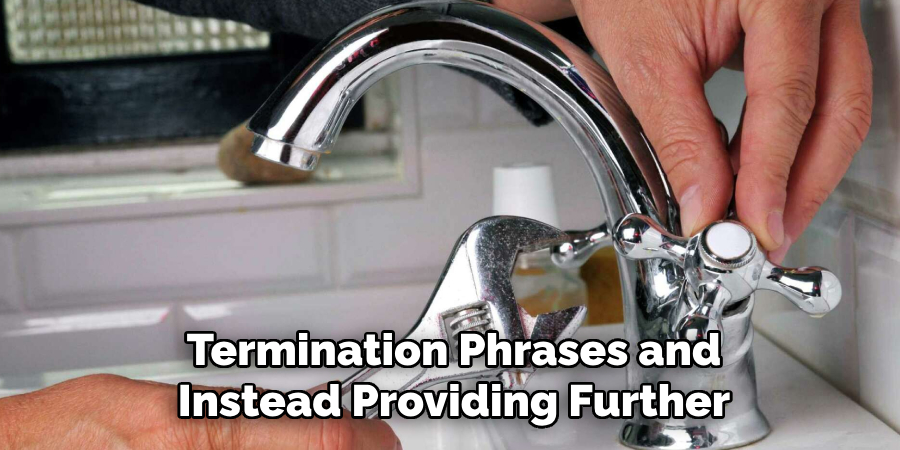
5 Things You Should Avoid
- Ignoring the Issue: Delaying action or ignoring the problem can lead to bigger issues, such as increased water wastage or damage to your plumbing system.
- Attempting Repairs Without Proper Knowledge: Trying to fix the issue without understanding the plumbing setup could result in further damage or even safety hazards.
- Using the Wrong Tools: Employing inappropriate or poorly maintained tools can damage your plumbing system’s pipes, fittings, or other components.
- Not Turning Off the Water Supply: Forgetting to shut off the water supply before beginning repairs can cause flooding or lead to unnecessary messes.
- Skipping Professional Help: If the problem persists or appears complex, avoiding professional assistance might escalate the issue and increase repair costs in the long run.
How to Fix Hot Water Overflow?
If you are experiencing a hot water overflow, it is essential to take immediate action to prevent further damage or potential safety hazards. Here are some steps you can take to fix the issue:
- Turn off the Power: Before attempting any repairs, turn off the power supply to your hot water system. This will prevent any risk of electric shock and ensure your safety.
- Drain the Tank: If the overflow is caused by excessive water pressure, drain some of the water from the tank using a garden hose. Make sure to direct the hose away from any electrical components or areas that could be damaged by excess water.
- Adjust Temperature Settings: Check if your hot water system has temperature settings and adjust them accordingly. If the temperature is set too high, it can cause water to boil and overflow.
- Inspect the Pressure Relief Valve: The pressure relief valve is designed to release excess pressure from the tank. It could be faulty or clogged, causing a hot water overflow. Inspect it for any signs of damage or blockage and replace it if necessary.
- Call a Professional Plumber: If you are unsure how to fix the issue or if it persists, it is best to call a professional plumber for assistance. They have the expertise and tools to diagnose and repair the problem quickly.
Conclusion
To resolve the hot water from the cold tap, it is essential to identify and address the root cause promptly. Start by checking for plumbing cross-connections, as these are often a common reason for this problem. Ensuring proper water heater maintenance, including inspecting its thermostat and pressure settings, can prevent heat transfer issues.
Verifying that the mixer valves are functioning correctly is critical, as faulty valves can misdirect hot water into the cold water lines. If these steps do not resolve the issue, consulting with a licensed plumber is recommended to ensure a thorough inspection and professional repair.
Hopefully, the article on how to fix hot water coming out of cold tap has provided you with valuable information and tips to resolve this issue effectively. Happy fixing!
About the Author
Adrian Green is a passionate woodworking enthusiast who has dedicated his life to the craft of woodworking. From his early days working alongside his father in the family woodworking shop, Adrian has honed his skills and developed a deep love for creating beautiful, functional pieces with his hands. As the voice behind The Woodenify Blog, he shares his knowledge, tips, and inspiration with fellow woodworkers of all skill levels, helping them build confidence in their abilities while learning new techniques.
Professional Focus
- Specializes in DIY woodworking projects, from furniture making to home décor.
- Provides step-by-step guides, tips, and practical tutorials for woodworkers at any skill level.
- Focused on empowering readers with confidence and knowledge through easy-to-follow instructions and hands-on techniques.
- Passionate about building a community where makers can share, learn, and grow together in the world of woodworking.
Education History
University of Craft and Design – Bachelor of Fine Arts (BFA) in Woodworking and Furniture Design
Woodworking Apprenticeships – Gained extensive hands-on experience through various workshops and mentorships with seasoned craftsmen, refining carpentry and furniture-making skills.
Expertise
- DIY woodworking, carpentry, furniture making, and home décor projects.
- Creating clear, accessible tutorials and guides for beginner to advanced woodworkers.
- Helping readers experience the satisfaction and fulfillment of turning raw materials into stunning finished products.
